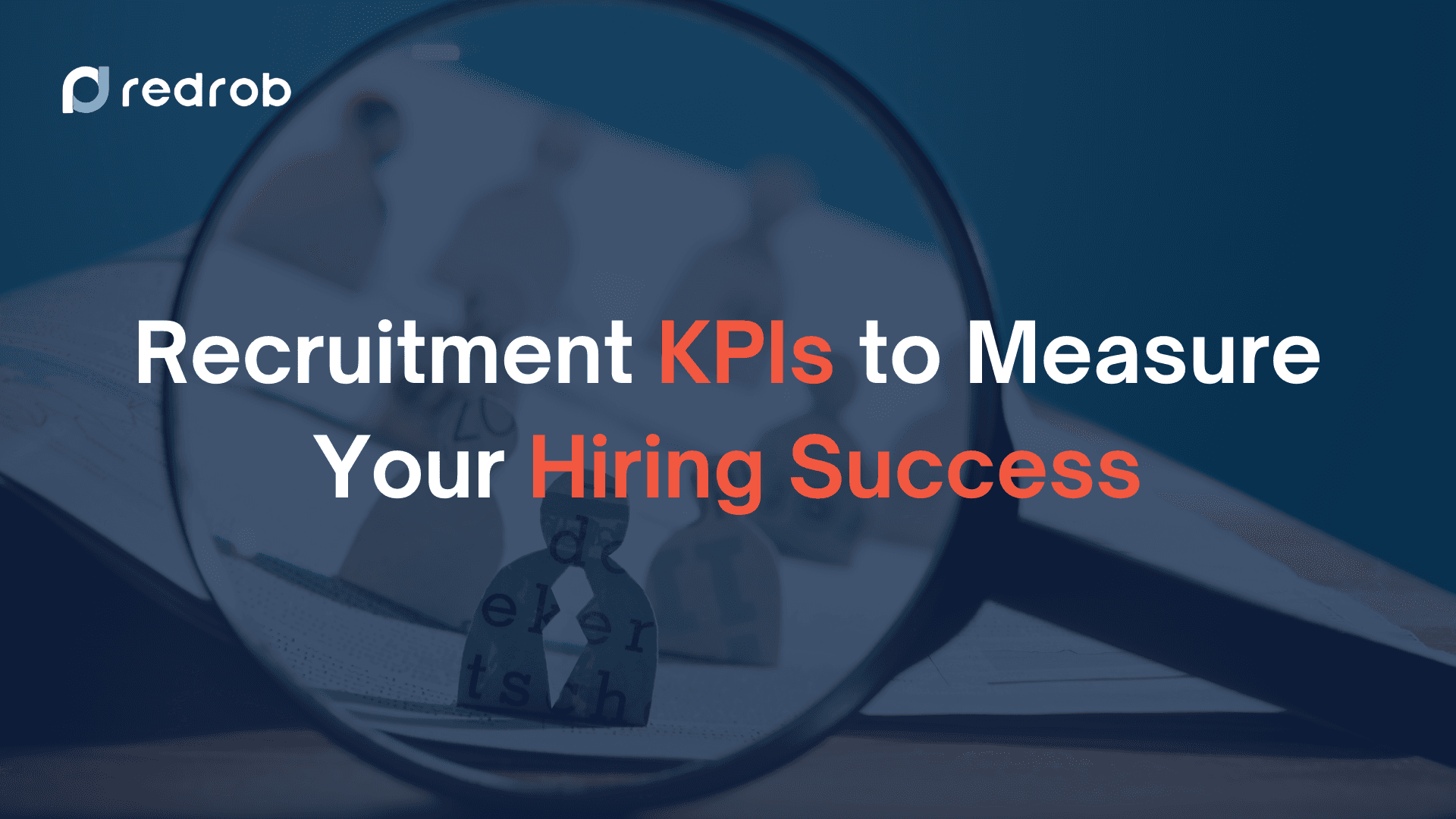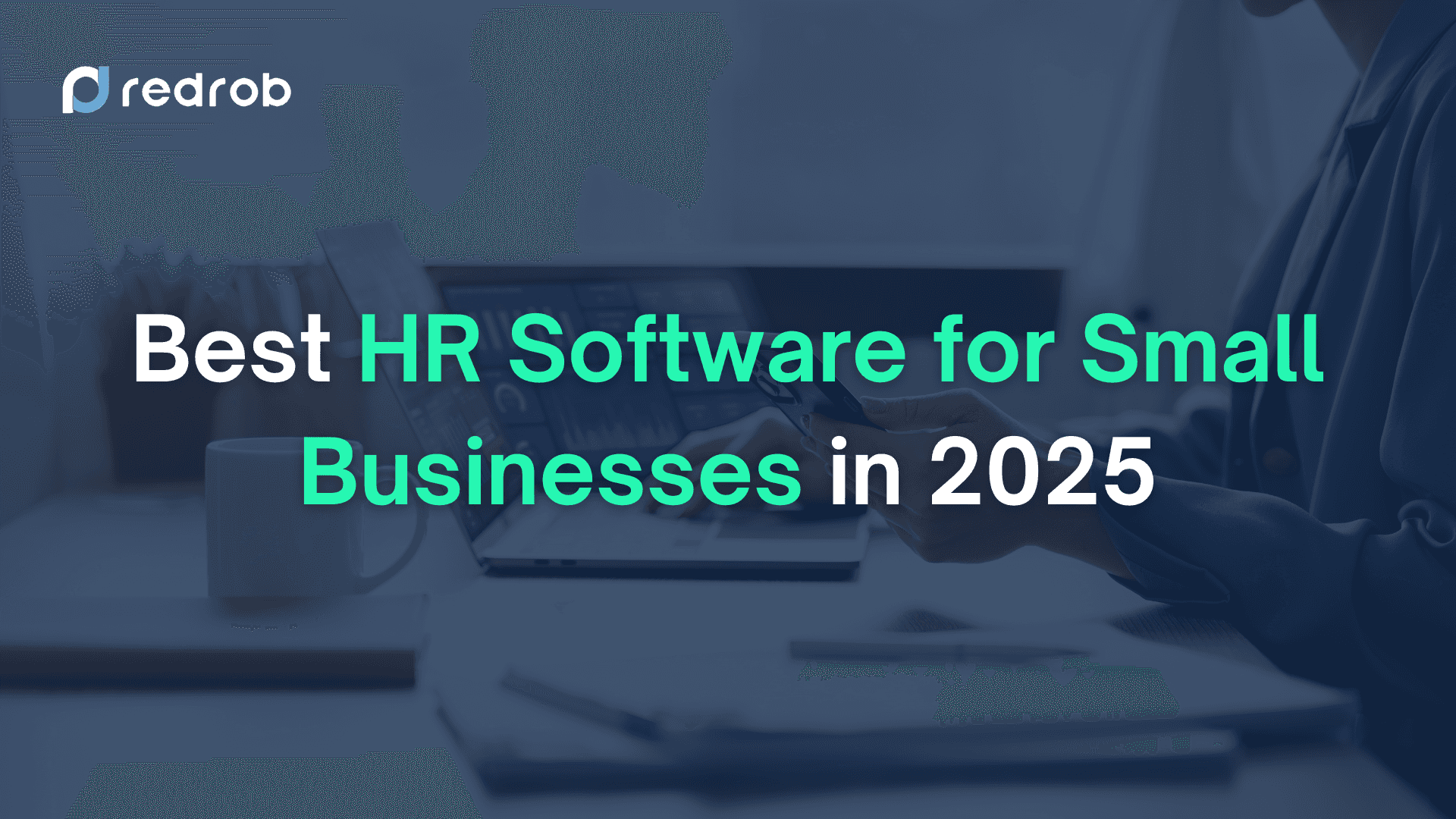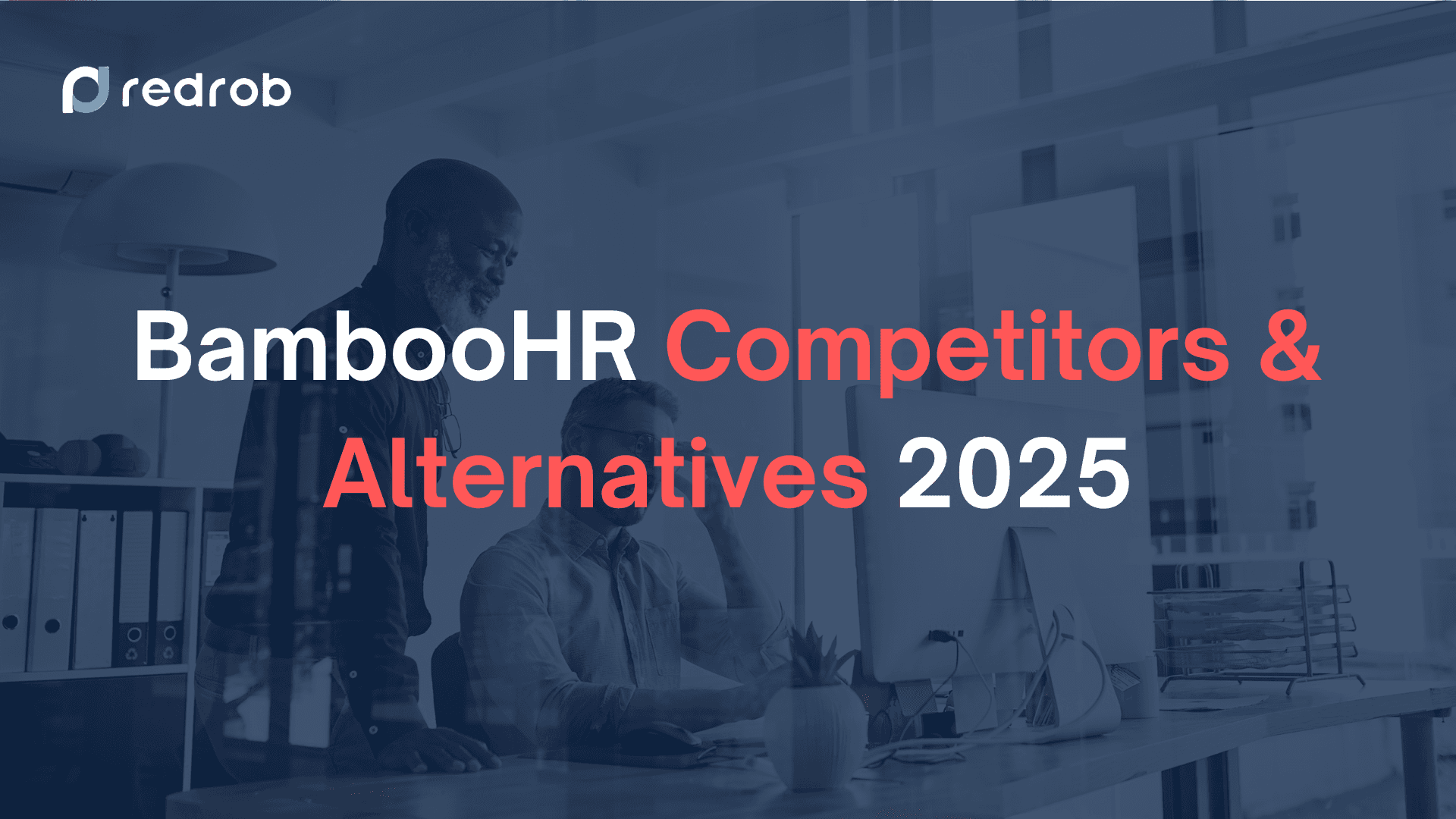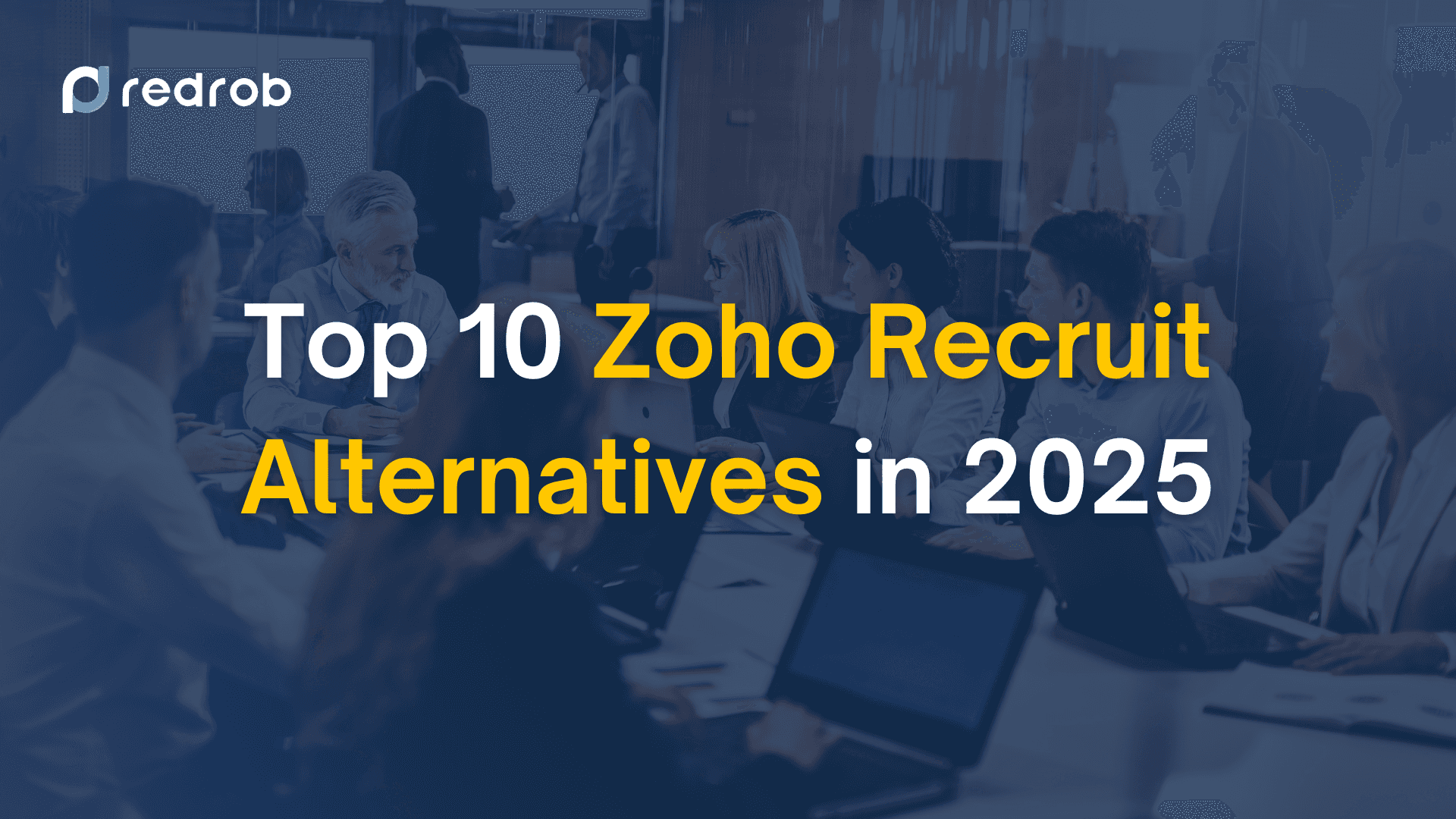Hiring
10 min
•
Sep 25, 2024

Soumyata Singh
Recruitment is a major investment, both in terms of time and money. To make the most of it, preparation and professionalism are key in every interview. A well-organized recruitment process allows you to assess candidates thoroughly, helping you choose the best fit for your team.
By tracking essential KPI recruitment metrics, you’ll ensure that your hiring process stays on course. In this blog, we share tips that will help you conduct interviews effectively and evaluate candidates with confidence.
Remember, it’s important to check from time to time that your recruitment strategy is taking you in the right direction. If you don’t wish to make hiring decisions you regret later (no one does), keep reading!
What are Recruitment KPIs?
Recruitment KPIs (Key Performance Indicators) help you track and improve your hiring efforts. They show how well your recruitment process works and point to areas for improvement. Understanding recruitment KPIs is crucial for making better hiring decisions.
Definition and Purpose
Recruitment KPIs are measurable values that track the success of hiring activities. They focus on areas like time to hire, cost per hire, and quality of candidates. These indicators help you refine your strategy and ensure you're meeting your goals.
Importance of Analyzing KPIs in Context
KPIs don’t provide value without context. You must compare them to industry standards or past results. For example, a 'Time to Hire' KPI could mean different things based on the role or market conditions. Context helps you understand whether your recruitment efforts are truly effective.
KPIs vs Metrics
KPIs are tied to specific recruitment goals, while metrics are general measurements. KPIs provide insight into how close you are to achieving goals, while metrics track basic data. For instance, 'Time to Hire' is a KPI, but the number of applicants is just a metric. You need both to build a complete hiring strategy.
Let’s move to the next section to understand the most important recruitment KPIs you should consider.
7 Most Important Recruitment KPIs to Measure Hiring Success

Here are some of the most important KPI recruitment metrics that you should measure to track the success of your recruitment strategy:
1. Qualified Candidates per Opening
Qualified Candidates per Opening is a key metric in recruitment that tracks how many suitable candidates progress through each interview stage. It helps you assess the effectiveness of your sourcing and screening efforts.
Measuring Qualified Candidates Reaching Interview Milestones
To measure this, you track the number of candidates moving from one interview stage to the next. A higher number indicates that your screening process is effective. If, for example, you have 50 applicants but only 5 reach the final stage, you have a 10% success rate. Monitoring this KPI recruitment metric helps you see where candidates may be dropping off.
Strategies for Improving the Ratio
Improving this ratio starts with refining your job descriptions. Clear, concise descriptions attract candidates who better fit the role. Screening tools can also help you quickly weed out unqualified applicants. Partnering with the right recruitment tech, such as applicant tracking systems (ATS), improves efficiency. 94% of the companies that use ATS reportedly see improvement in the quality of candidates reaching interview stages.
Redrob’s AI-powered ATS can help you reduce candidate screening time by 60%. Know it better.
2. Time to Hire
Time to Hire is yet another most important KPIs when measuring the relevance of your recruitment strategy. It shows how long it takes to hire a candidate from the moment you post the job to the final acceptance of the offer.
Definition and Calculation
Time to hire measures the total days spent to fill a role. It starts when a candidate enters the pipeline and ends when they accept the offer. You calculate it by averaging the number of days it takes to hire across different roles. For instance, if it takes 30 days to hire for one role and 40 days for another, the average recruitment time would be 35 days.
Importance for Recruitment Strategy
A shorter time to hire often means a more efficient recruitment process. A long time to hire may result in losing top candidates to competitors. Studies show that 70% of job seekers lose interest in a role if they don’t hear back within two weeks. This KPI recruitment metric also impacts other KPIs like cost per hire and offer acceptance rates.
Identifying and Eliminating Bottlenecks
Identifying bottlenecks is key to reducing time to hire. Common bottlenecks include delays in scheduling interviews or slow feedback from hiring managers. To eliminate these issues, streamline communication, and use recruitment tech tools like applicant tracking systems (ATS). Automating parts of the process can reduce time to hire significantly.
3. Offer Acceptance Rate
The offer acceptance rate shows how often candidates accept job offers. It’s a critical measure of how attractive your job offers are to candidates.
Its Importance
Offer acceptance rate is the percentage of candidates who accept your offer compared to those who receive it. It’s a crucial KPI recruitment metric because it reflects the overall success of your hiring process. A high acceptance rate shows you’re meeting candidate expectations and presenting competitive offers. On the other hand, a low rate can indicate issues with compensation or company culture.
Calculation Method
You can calculate the offer acceptance rate by dividing the number of accepted offers by the total number of offers made, then multiplying by 100. For instance, if you made 10 offers and 8 were accepted, your offer acceptance rate would be 80%. Tracking this metric helps you adjust your offer strategy when needed.
Indicators of Successful Recruitment
A high offer acceptance rate signals a well-aligned recruitment process. It shows that your compensation, benefits, and company culture appeal to top candidates. Most job seekers prefer accepting competent job offers. If your rate is consistently high, your recruitment strategy is on point.
4. Quality of Hire

Quality of hire depends on the long-term success of the employees you bring on board. It reflects how well new hires perform and contribute to your organization. It shows how well a candidate fits the role and performs over time.
It’s one of the most important indicators of hiring success. High-quality hires improve productivity, retention, and overall team performance.
Measuring Quality with Company-Specific Factors
Measuring quality depends on what matters most to your company. You can assess this by tracking performance reviews, retention rates, and cultural fit. For example, if a new hire consistently meets performance goals within their first six months, that reflects a high quality of hire. Tailoring these factors to your company’s needs ensures you’re hiring the right people.
Adjusting Selection Criteria Based on Patterns
If patterns show that certain hires perform better, adjust your selection criteria. For instance, you may notice that candidates from a specific educational background or industry perform well. Identifying these patterns helps you refine your hiring process to focus on qualities that drive success.
5. Cost per Hire
Cost per hire is a crucial recruitment KPI that tracks how much it costs to fill a position. Monitoring this metric helps you optimize your recruitment budget and improve efficiency.
Tracking Recruitment Spending
Tracking cost per hire involves calculating all expenses related to hiring. These include advertising, recruitment agency fees, and interview costs. Knowing your spending per hire allows you to see where your budget goes. For example, if you spend $5,000 on ads and $3,000 on interviews, your total recruitment cost is $8,000.
Comparing Individual and Average Costs
You should compare individual hire costs with your company’s average cost per hire. If one hire costs significantly more, it might signal inefficiencies in your process. For instance, if your average cost per hire is $7,000, but one hire costs $12,000, you’ll want to review that process. Comparing this KPI recruitment metric helps identify areas for improvement.
Budgeting and Cost-Cutting Strategies
To cut costs, focus on using free job boards, internal referrals, and optimizing your recruitment tech. Companies that invest in internal referral programs reduce their cost per hire noticeably. Setting a budget and tracking actual spending ensures that you stay cost-effective. Automating some recruitment steps can also save time and money.
Redrob helps you cut down up to 88% of cost per hire. Explore our services.
6. Candidate Sourcing Channel Efficiency
Sourcing Channel efficiency is measured based on how well different hiring channels bring in qualified candidates for you. Tracking this metric helps you optimize where to focus your recruitment efforts.
Measuring Efficiency of Sourcing Channels
Each sourcing channel, such as job boards, referrals, or social media, has a different efficiency level. This KPI recruitment metric tracks which channels deliver the most qualified candidates. For example, if LinkedIn provides 40% of your hires while costing less than job boards, it’s more efficient. This data lets you allocate resources to the best-performing channels.
Optimizing Recruitment Channels
To improve sourcing efficiency, focus on the channels that deliver high-quality candidates at a lower cost. Consistently reviewing channel performance ensures you invest in the most cost-effective and productive sources.
Cutting Low-Performing Channels
If certain channels bring in fewer qualified candidates or cost more, cut them off. For instance, if a job board costs $2,000 but only results in one hire, it's inefficient. Adjusting your strategy based on this data helps you boost efficiency across the recruitment process.
With Redrob, you can customize pricing plans based on your specific hiring requirements. Get Your Tailored Plan Now! OR Book a Demo.
7. Candidate Satisfaction
Candidate satisfaction reflects whether and how much your recruitment process meets the expectations of candidates. This KPI helps you improve your employer brand and attract top talent.
Measuring Candidate Satisfaction
You can measure candidate satisfaction through surveys and feedback at key stages of the hiring process. A high satisfaction rate for this KPI recruitment metric indicates that candidates have a positive experience, even if they aren’t hired. For example, if 80% of candidates report a good experience, it shows your process is candidate-friendly.
Impact on Employer Brand
Satisfied candidates are more likely to share positive reviews of your company. This boosts your reputation and helps you attract more talent. Companies with strong employer brands see a 50% reduction in cost per hire. In KPI recruitment, tracking candidate satisfaction helps you maintain a positive image in the job market.
Strategies for Improvement
To improve satisfaction, communicate clearly, provide timely feedback, and keep the process efficient. Offering updates at each stage can enhance the candidate experience. Focusing on transparency and responsiveness will increase satisfaction rates and improve your overall hiring success.
Conclusion
Expanding your KPI recruitment metrics based on specific initiatives is essential for long-term success. Tailoring KPIs to align with unique goals allows you to track what truly matters. For example, if you're focused on reducing time to hire, you should prioritize that KPI and its related metrics. This flexibility helps improve your recruitment strategy and meet your objectives.
Customizing how you visualize these KPIs makes tracking progress easier. Using tools that present data in charts and graphs lets you quickly identify trends. Tracking KPI recruitment metrics ensures that you consistently improve your hiring process. This way you can hire better candidates faster, saving time and money.
Strengthen Your Recruitment Strategy With Redrob
With Redrob, you get access to some of the best modern recruiting solutions that utilize AI and other technologies to make hiring more efficient for you. It’s one of India’s best hiring platforms that goes beyond resume screening and candidate sourcing to help you make better decisions.
What do you get with Redrob?
Automation of recurring tasks to reduce manual work
Comprehensive ATS for overall tracking
AI-powered resume parsing so you get best candidate matches
Sophisticated job boards with filters and profile ranking
Online assessments and interview management tools
This can save up to 92% of hiring time and 88% of cost with us. Get to know us more OR Start Your FREE Trial Now!



